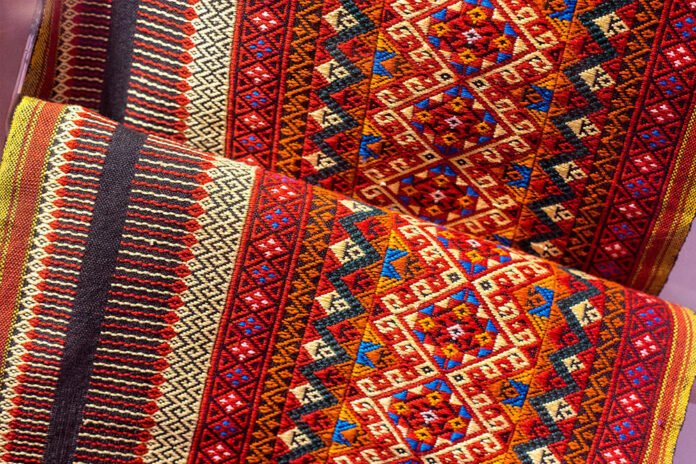Türkiye has a rich weaving culture that is found in its different regions each boasting unique, local and traditional techniques. The fabrics and clothes are created by hand and reflect the history of Anatolia
Weaving is an important part of the rich Anatolian culture, as a sector of production with a deep-rooted history and a branch of handicraft. In the 21st century, the artisans have struggled to survive in Anatolia. Weaving dates back thousands of years, according to archaeological findings related to weaving from excavations carried out in Anatolia.
Istanbul, Bursa, Denizli, Gaziantep and Burdur, known as weaver cities in the past, still maintain this identity. Local weaving, listed as one of the oldest art forms in the history of humanity. The techniques developed by the weaver’s dexterity and creativity give the fabric a local identity.
Weaving in the southwestern province of Burdur has a history of about 300 years. The most well-known weavings are Ibecik cloth, Dastar and Burdur alacası (particolored). It is one of the oldest handicrafts of Burdur.
The Boyabat circle is a thin cotton fabric of approximately 1 square meter (10 square feet), used as a head covering or veil in the region, surrounded by burgundy colored bands and decorated with motifs created with colored threads in the middle. Despite the wide variety of head coverings, women still use the circle extensively in some villages of the Black Sea district of Ehram
The eastern Anatolian province of Erzurum’s “ehram” – or “ihram” – is the name of women’s outerwear made of finely spun sheep wool, which is obtained by weaving with a flat surfaced shuttle via laborious stages. The value of the ehram is directly proportional to the fineness of the threads. Ehram is embroidered by hand during or after weaving. This precious fabric, which is a preferred handicraft due to it being free of chemicals.
Southern Hatay province’s silk weaving can be seen in its districts of Samandağ, Defne and Harbiye. Silk weaving has been known and popular in the region since the Byzantine era. Today, one of the largest groups keeping Hatay silk weaving alive is the Büyükaşık family. It is a local weaving technique, where the warp and weft are made of natural white silk threads, using plain and twill weaves, with a width of 80 to 100 centimeters (31.5 to 39 inches). There are no patterns in the weavings.



